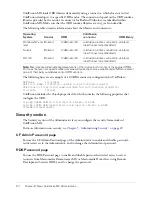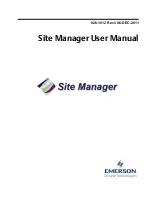
48
Chapter 3: Data Source Management
Connecting to MySQL
Use the settings in the following table to connect ColdFusion MX to MySQL data sources:
Maintain Connections
ColdFusion MX establishes a connection to a data source for every
operation that requires one. Enable this option to improve performance
by caching the data source connection.
String Format
Enable this option if your application uses Unicode data in DBMS-
specific Unicode datatypes such as National Character or nchar.
Max Pooled Statements
Enables reuse of prepared statements (that is, stored procedures and
queries that use the
cfqueryparam
tag). Although you tune this setting
based on your application, start by setting it to the sum of the following:
•
Unique
cfquery
tags that use
cfqueryparam
•
Unique
cfstoredproc
tags
Timeout (min)
The maximum number of minutes after the data source connection is
made that you want ColdFusion MX to cache a connection after it is used.
Interval (min)
The time (in minutes) that the server waits between cycles to check for
expired data source connections to close.
Disable Connections
If selected, suspends all client connections.
Login Timeout (sec)
The number of seconds before ColdFusion MX times out the data source
connection login attempt.
CLOB
Select to return the entire contents of any CLOB/Text columns in the
database for this data source. If not selected, ColdFusion MX retrieves
the amount specified in the Long Text Buffer setting.
BLOB
Select to return the entire contents of any BLOB/Image columns in the
database for this data source. If not selected, ColdFusion MX retrieves
the amount specified in the Blob Buffer setting.
LongText Buffer
The default buffer size, used if Enable Long Text Retrieval(CLOB) is not
selected. Default is 64000 bytes.
BLOB Buffer
The default buffer size, used if Enable binary large object retrieval
(BLOB) is not selected. Default is 64000 bytes.
Allowed SQL
The SQL operations that can interact with the current data source.
Setting
Description
CF Data Source Name
The data source name (DSN) used by ColdFusion MX to connect to the
data source.
Database
The database to which this data source connects.
Server
The name of the server that hosts the database that you want to use. If the
database is local, enclose the word local in parentheses.
Port
The number of the TCP/IP port that the server monitors for connections.
Setting
Description
Summary of Contents for COLDFUSION MX 61 - CONFIGURING AND ADMINISTERING COLDFUSION...
Page 1: ...Configuring and Administering ColdFusion MX...
Page 8: ...8 Contents...
Page 10: ...10 Introduction...
Page 12: ......
Page 36: ...36 Chapter 2 Basic ColdFusion MX Administration...
Page 56: ...56 Chapter 3 Data Source Management...
Page 74: ...74 Chapter 5 Administering Security...
Page 84: ......
Page 132: ...132 Chapter 9 Indexing Collections with Verity Spider...
Page 142: ...142 Chapter 10 Searching Collections with K2 Server...
Page 148: ...148 Chapter 11 Searching Collections with the rcvdk Utility...
















































